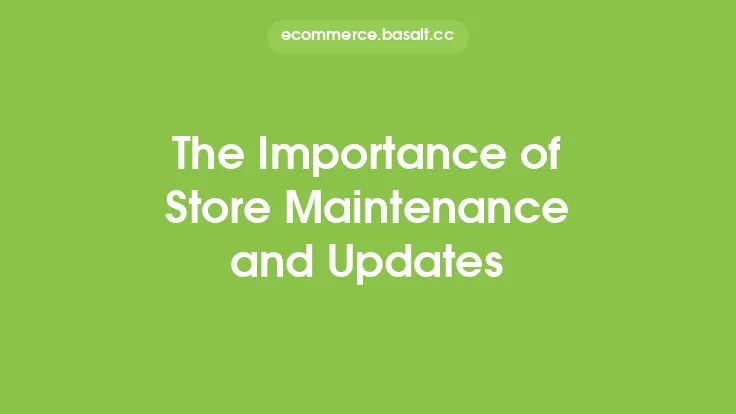In the world of e-commerce, store performance is a critical factor that can make or break a business. A slow-loading website or delayed content delivery can lead to frustrated customers, abandoned shopping carts, and ultimately, lost sales. To mitigate these issues, two essential technologies have emerged: caching and content delivery networks (CDNs). In this article, we will delve into the world of caching and CDNs, exploring how they can enhance store performance, improve user experience, and drive business growth.
What is Caching?
Caching is a technique used to store frequently accessed data in a temporary storage location, known as a cache, to reduce the time it takes to retrieve the data from its original source. In the context of e-commerce, caching can be applied to various levels, including browser caching, server caching, and database caching. By storing cached copies of web pages, images, and other resources, caching helps reduce the number of requests made to the server, resulting in faster page loads and improved user experience.
How Caching Works
The caching process involves several steps. First, a user requests a web page or resource from the server. The server then checks if a cached copy of the requested resource is available. If a cached copy is found, the server returns the cached copy to the user, bypassing the need to retrieve the data from its original source. If no cached copy is available, the server retrieves the data from its original source, stores a copy in the cache, and returns the data to the user. Over time, the cache is updated to reflect changes to the original data, ensuring that users always receive the most up-to-date information.
Benefits of Caching
The benefits of caching are numerous. By reducing the number of requests made to the server, caching helps alleviate server load, resulting in faster page loads and improved user experience. Caching also reduces the amount of bandwidth required to deliver content, leading to cost savings and improved network efficiency. Additionally, caching can help improve search engine optimization (SEO) by reducing page load times, which is a key factor in search engine rankings.
What is a Content Delivery Network (CDN)?
A content delivery network (CDN) is a network of distributed servers that deliver web content, such as images, videos, and HTML files, to users based on their geographic location. CDNs work by caching content at multiple edge locations, which are typically located closer to users than the origin server. When a user requests content, the CDN directs the user to the nearest edge location, reducing the distance the data needs to travel and resulting in faster content delivery.
How CDNs Work
The process of using a CDN involves several steps. First, a user requests content from a website. The CDN then directs the user to the nearest edge location, where a cached copy of the requested content is stored. If a cached copy is available, the edge location returns the cached copy to the user. If no cached copy is available, the edge location retrieves the content from the origin server, stores a copy in the cache, and returns the content to the user. Over time, the CDN updates the cached copies to reflect changes to the original content, ensuring that users always receive the most up-to-date information.
Benefits of CDNs
The benefits of CDNs are numerous. By reducing the distance between users and content, CDNs help improve content delivery speeds, resulting in faster page loads and improved user experience. CDNs also help reduce the load on the origin server, resulting in improved server performance and reduced bandwidth costs. Additionally, CDNs can help improve SEO by reducing page load times, which is a key factor in search engine rankings.
Implementing Caching and CDNs
Implementing caching and CDNs can be a complex process, requiring careful planning and configuration. There are several types of caching and CDNs available, including browser caching, server caching, and third-party CDNs. When selecting a caching or CDN solution, it's essential to consider factors such as cache size, cache expiration, and CDN coverage. Additionally, it's crucial to monitor caching and CDN performance regularly, making adjustments as needed to ensure optimal performance.
Best Practices for Caching and CDNs
To get the most out of caching and CDNs, it's essential to follow best practices. These include using a combination of caching and CDNs to achieve optimal performance, configuring cache expiration and CDN coverage carefully, and monitoring performance regularly. Additionally, it's crucial to ensure that caching and CDNs are compatible with other technologies, such as SSL encryption and website security solutions.
Common Challenges and Limitations
While caching and CDNs can significantly enhance store performance, there are common challenges and limitations to be aware of. These include cache invalidation, which can lead to stale content being served to users, and CDN configuration, which can be complex and time-consuming. Additionally, caching and CDNs may not be effective for all types of content, such as dynamic or personalized content.
Future of Caching and CDNs
The future of caching and CDNs is exciting, with emerging technologies such as edge computing and artificial intelligence (AI) set to revolutionize the way content is delivered. Edge computing, which involves processing data at the edge of the network, is expected to improve content delivery speeds and reduce latency. AI, which can be used to optimize caching and CDN performance, is expected to improve the efficiency and effectiveness of caching and CDNs.
Conclusion
In conclusion, caching and CDNs are essential technologies for enhancing store performance and improving user experience. By reducing the time it takes to retrieve data and deliver content, caching and CDNs can help improve page load times, reduce server load, and improve SEO. While implementing caching and CDNs can be complex, following best practices and being aware of common challenges and limitations can help ensure optimal performance. As emerging technologies continue to evolve, the future of caching and CDNs is exciting, with opportunities for even faster and more efficient content delivery.





